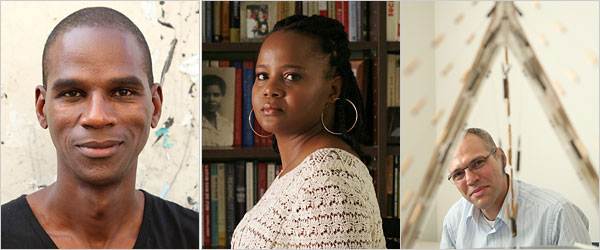| Want to send this page or a link to a friend? Click on mail at the top of this window. |
| Posted September 22, 2009 |
|
For MacArthur Grants, Another Set of Geniuses |
|
|
|
|
 |
|
|
JOHN D. AND CATHERINE T. MACARTHUR FOUNDATION, CINDY KARP FOR THE N.Y.T. |
|
| This year's winners of MacArthur fellowships include, clockwise from left, Mark Bradford, a mixed-media artist; the writer Edwidge Danticat; and Theodore Zoli, a bridge engineer. |
|
By FELICIA R. LEE |
| Wehaitians.com, the scholarly journal of democracy and human rights |
| More from wehaitians.com |